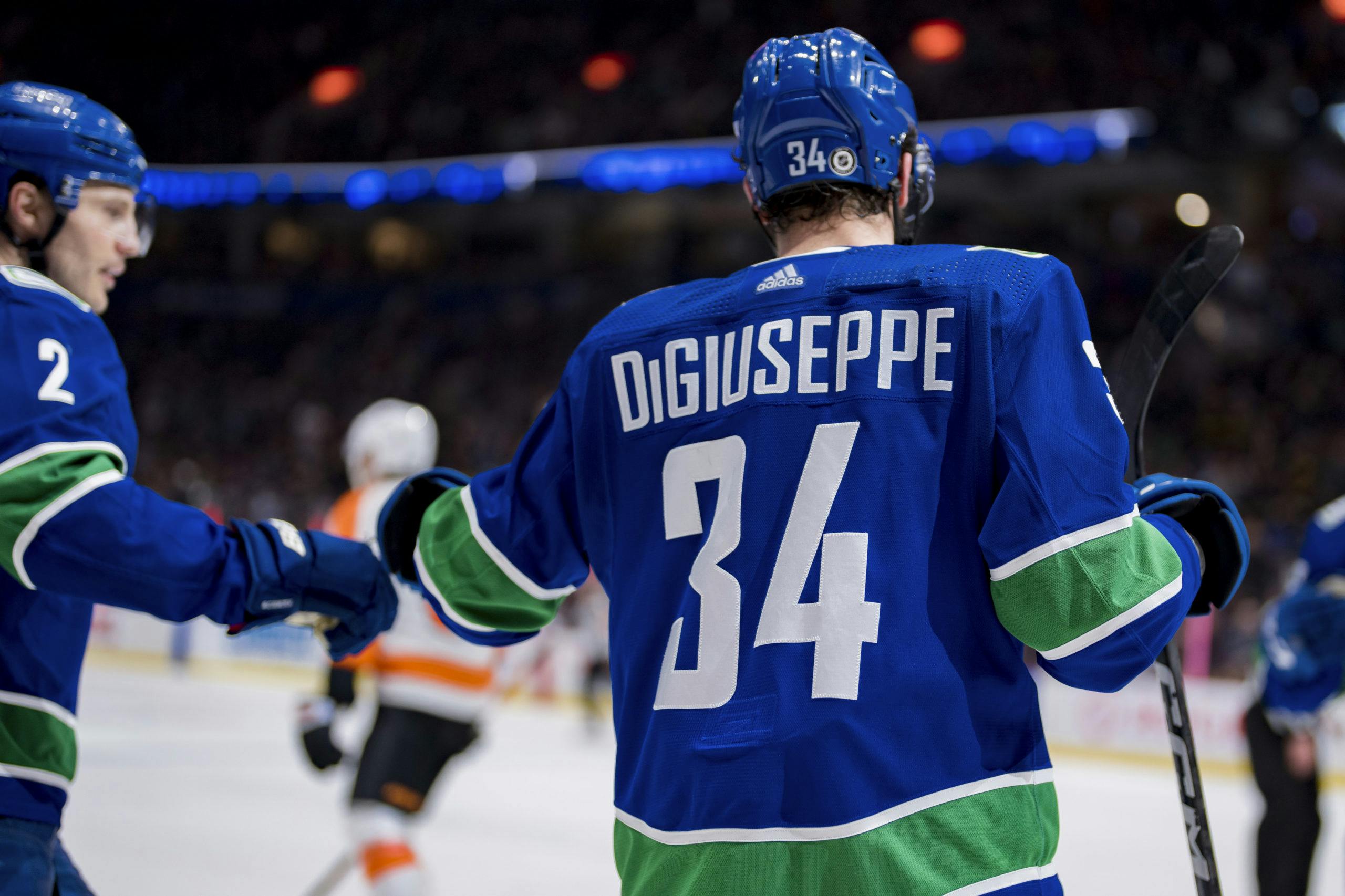Phil Di Giuseppe’s first career #StanleyCup Playoff goal ties the game! @Canucks | #Canucks
Nation Sites
The Nation Network
CanucksArmy has no direct affiliation to the Vancouver Canucks, Canucks Sports & Entertainment, NHL, or NHLPA
Slotting him properly is key to Canucks getting most out of Phil Di Giuseppe: Year in Review

Photo credit: © Bob Frid-USA TODAY Sports
Jun 15, 2024, 14:30 EDTUpdated: Jun 15, 2024, 14:16 EDT
With Phil Di Giuseppe, the effort is never in question. What is open to discussion and debate is whether a player like Di Giuseppe adds enough on a nightly basis to help a team like the Vancouver Canucks get better.
At the age of 30, the veteran winger established a career-high for games played, appearing in 51 contests for the Canucks last season. He scored five times and added five assists while averaging 12:06 of ice time. His season was interrupted by a lower-body injury in January that forced him out of the lineup for six weeks.
Like many of his teammates, Di Giuseppe started strong but faded down the stretch. This is a player that turned heads with a strong training camp and preseason and earned the opportunity to open the season on left wing with JT Miller and Brock Boeser. In fact, those two were Di Giuseppe’s most frequent linemates at 5-on-5 this season. The issue was that the underlying numbers showed he was a drag in the top six, with Miller and Boeser performing considerably better away from Di Giuseppe than they did with him at their side. In many ways, though, that was to be expected. Despite being a second-round draft pick of Carolina in 2012, at this stage of his career, the Toronto native is a depth forward who shouldn’t be relied on to be a mainstay top-six role player for a properly constructed hockey club.
Di Giuseppe is a low-maintenance player with the size and speed to thrive in Rick Tocchet’s system. According to NHL Edge, Di Giuseppe posted a top skating speed of 36.4 KPH, which ranked him in the 69th percentile of all NHL skaters this season. What likely will keep him on the roster next season is his penalty killing utility. The guy known as PDG averaged 1:13 of short-handed ice time last season, and his goals against per 60 while on the kill was the lowest among Canucks penalty killers. Some of that can likely be attributed to the fact that Di Giuseppe faced second-unit power plays. Whatever the case, with hustle, determination, and adherence to the structure Tocchet demands from his players, Di Giuseppe was able to thrive. And the Canucks will likely need him to do more of the same on special teams next season.
However, the hope has to be that he’s able to spend more of his 5-on-5 shifts in the offensive zone than he did last season when the Canucks controlled just 45.2% of the shot attempts and only 42.9% of expected goals with Di Giuseppe on the ice. Overall, the Canucks were outscored 16-20 at 5-on-5 with PDG on patrol.
Popular with his teammates, Di Giuseppe has a role to fill as long as he’s slotted properly on the fourth line and isn’t elevated to play higher in the lineup. It’s clear by now that he’s not a player that has much room to rise up the depth chart. Put him in a place to succeed, and Di Giuseppe can get the job done. While his 93 hits on the season won’t jump off the page—because he was limited to 51 games—his hits/60 (9.03) placed him sixth on the hockey club.
The playoffs were more of the same for PDG, who worked hard but wasn’t able to accomplish much. He dressed for 11 of the team’s 13 games—missing a pair in the middle of the Edmonton series for the birth of his son—and registered a goal and an assist. His goal in Game 5 against the Oilers was the result of dogged determination on the forecheck, and that’s what Di Giuseppe is able to provide when he’s on top of his game.
The expectations should be held in check for Di Giuseppe next season. Still, on a league-minimum salary ($775K), there’s enough there in penalty-killing prowess alone to extract value off that deal. At this stage of his career, PDG can’t take a job in the NHL for granted and will surely be pushed for a roster spot at training camp. But it’s clear Rick Tocchet trusts this player, and every indication is that he’ll be pencilled in as one of the 12 forwards on the Canucks opening night lineup for next season.
Breaking News
- The Stanchies: Conor Garland makes it interesting, but Canucks fall 6-3 to Sharks
- World Juniors: Canucks’ Cootes and Team Canada avoid upset loss, Sansonnens scores for Switzerland
- Instant Reaction: Home woes continue as Canucks fall 6-3 to Sharks
- Canucks: The pros and cons of the Quinn Hughes trade, two weeks later
- Scenes from morning skate: Pettersson returns, Demko starts for Canucks vs. Sharks
